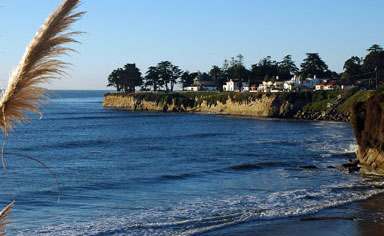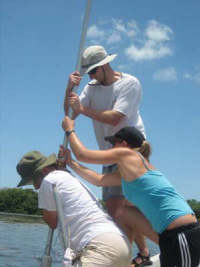"One of the goals of doing paleoclimate research is understanding the processes that impact the system today," says Adina. "However, since there is a relatively short record covered by instrumental data – the past 100 years or so - in order to understand how changes in the climate - specifically in rainfall amounts and temperature - would affect the Earth under boundary conditions different than those we experienced in the recent past, we have to look to the geological record."
|
||
Data taken from Elkhorn Slough sediment cores measure past groundwater discharge and related change in wetland and marsh ecosystems. (Very little is known about how the influence of coastal groundwater discharge has varied in the past in response to changes in climate.) Past groundwater discharge is reconstructed from fossil samples found in the cores, using a naturally occurring isotope as a tracer of groundwater inputs, measuring the prevalence of the isotope in fossil shells. This research is providing links showing how climatic conditions impacted the organisms that can be found in the fossil record.
A second Elkhorn Slough project involves reconstructing how pH has changed in the estuary over time. "pH is very dynamic in an estuarine system," says Adina. "We can look at natural settings where the pH of the water changed a lot and see what the impacts of that were, and then use that to predict consequences of what will happen with current and future changing pH in the ocean."
Using trace metal geochemistry of marine fossils, the work on reconstructing past ocean pH will fill in knowledge gaps and may show the effects of low and variable pH on marine and estuary ecosystems.



